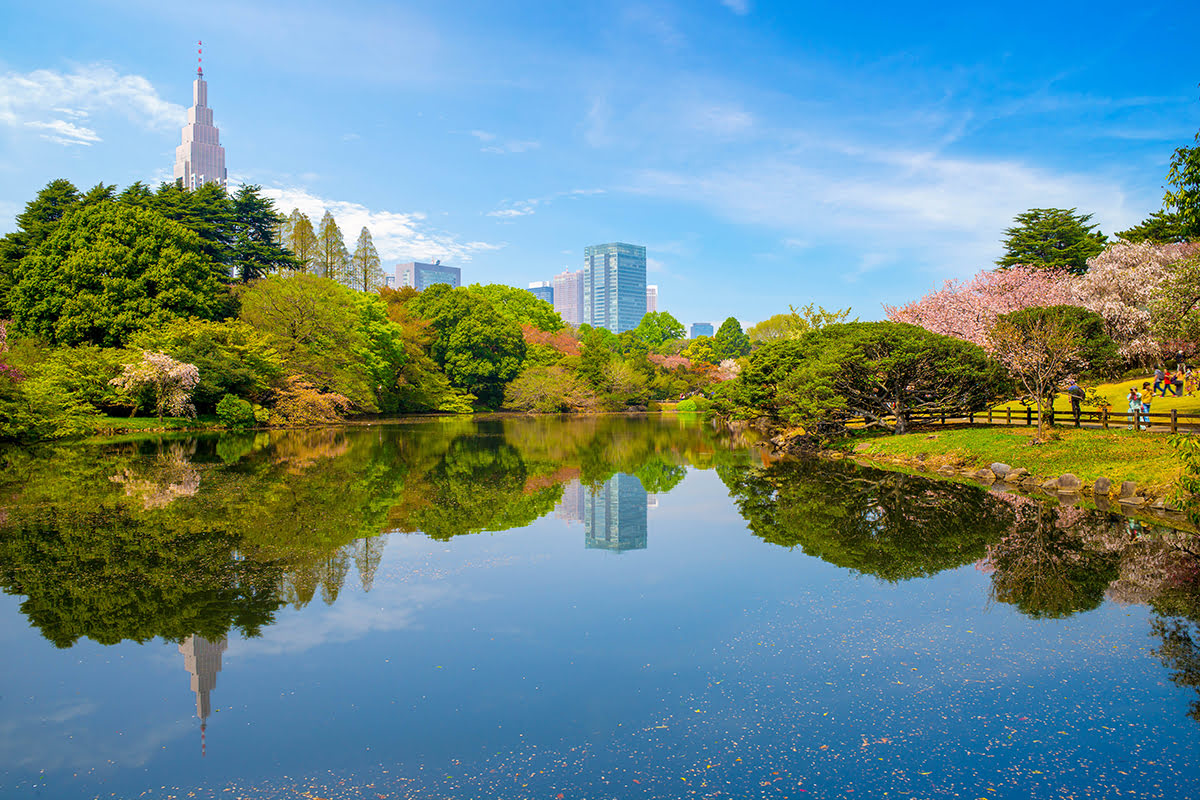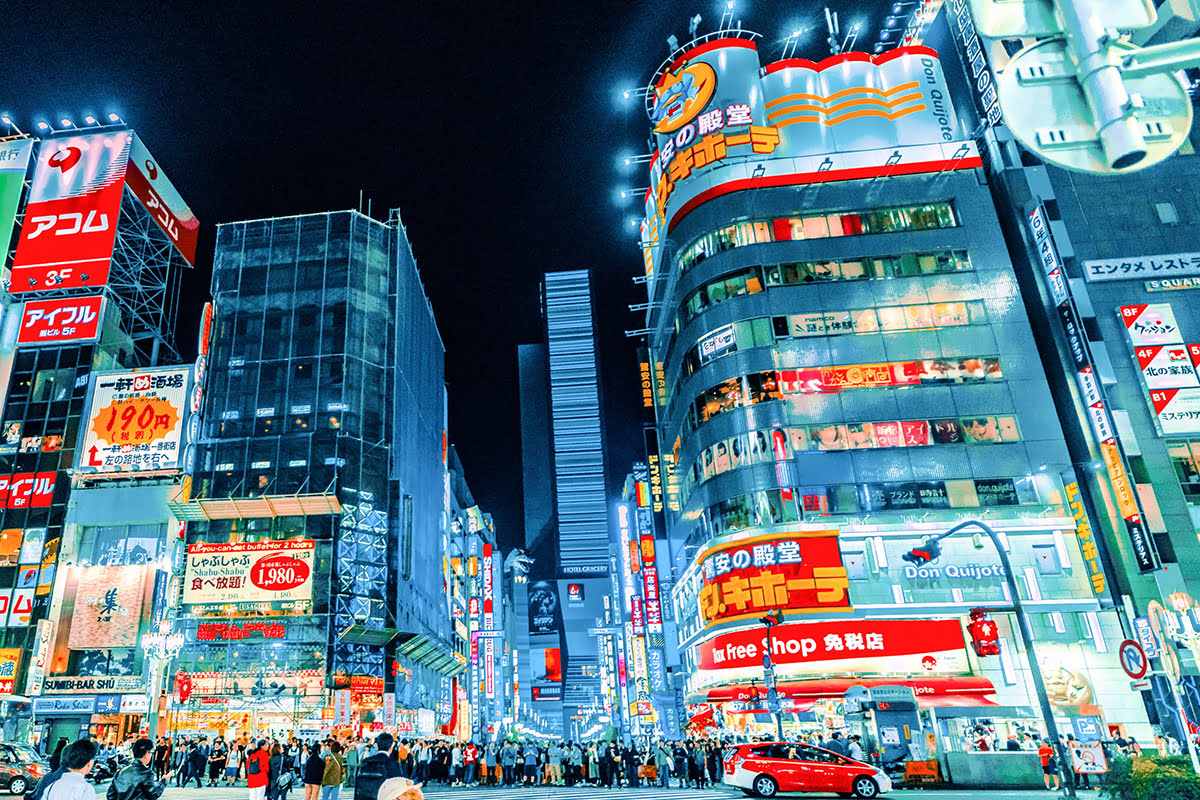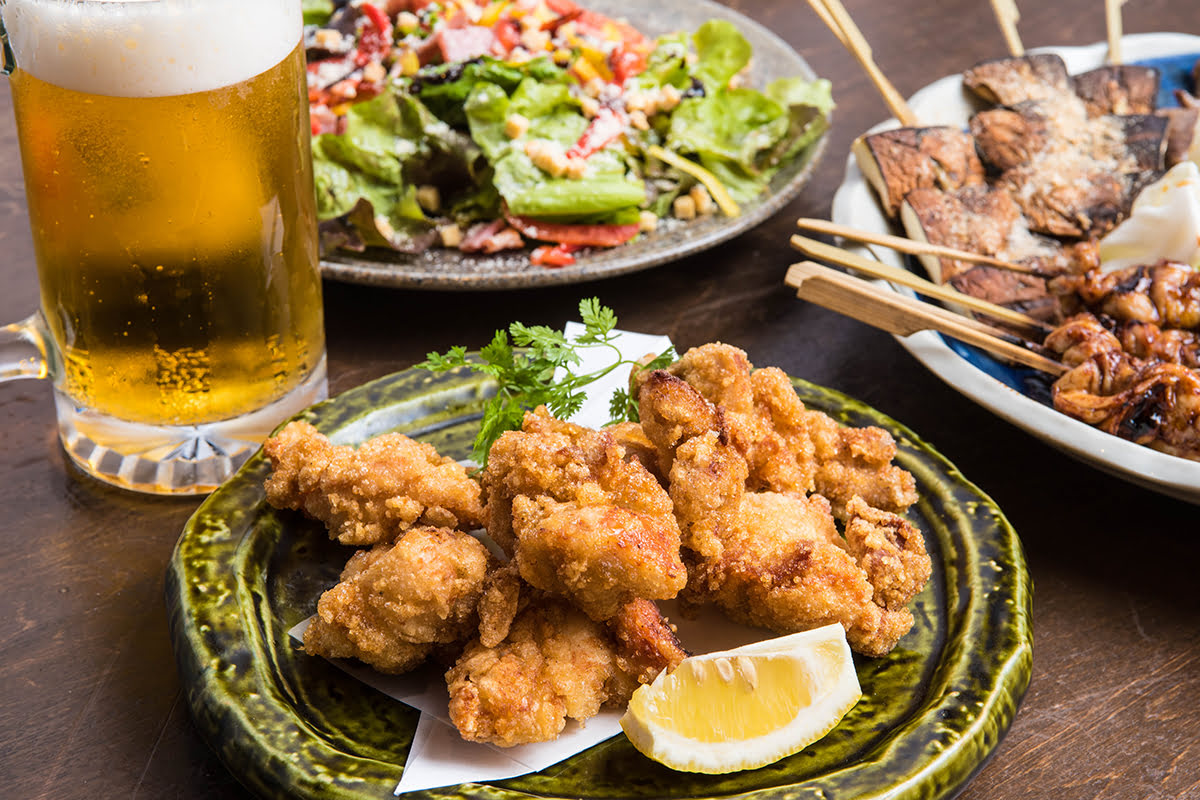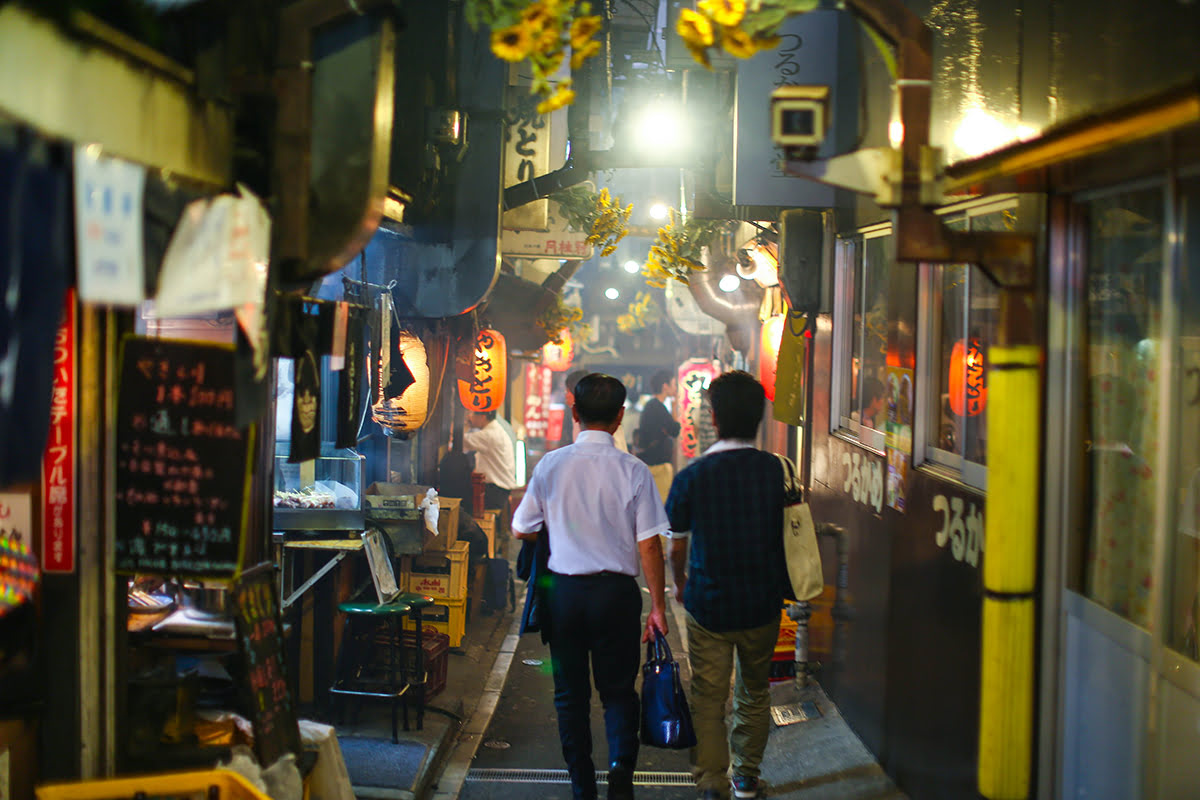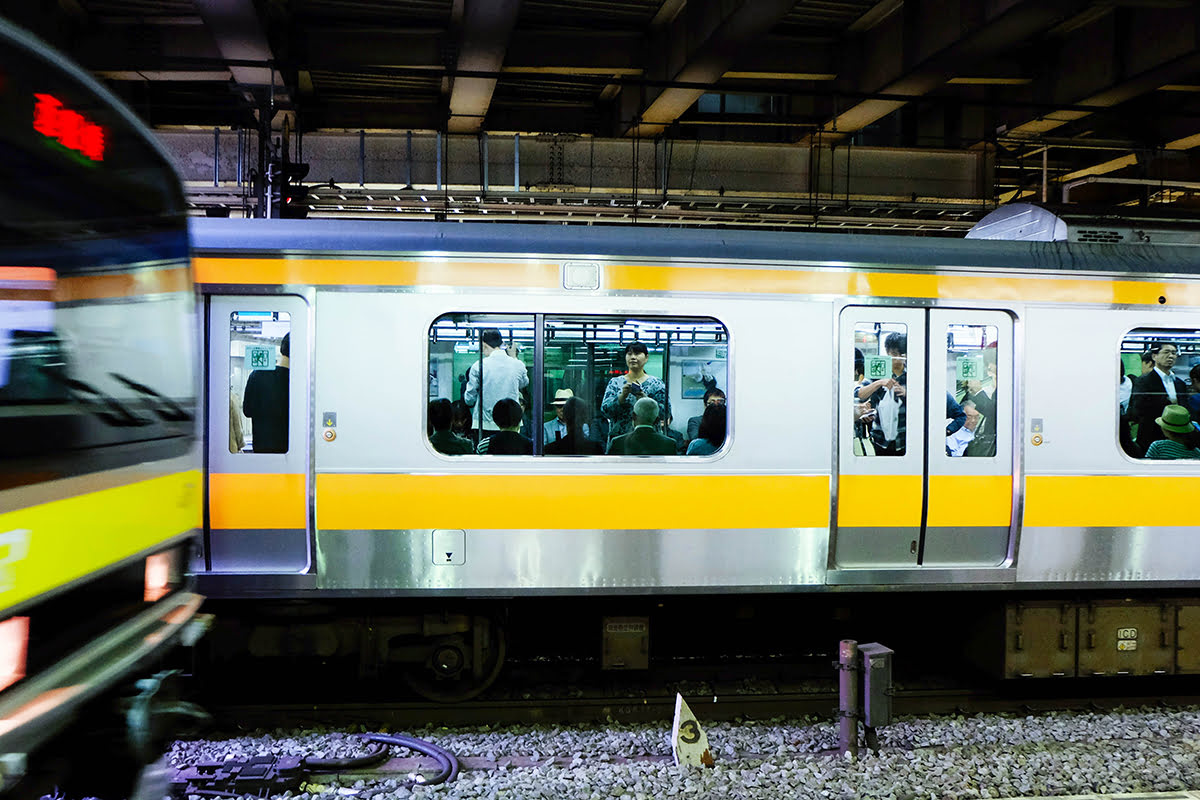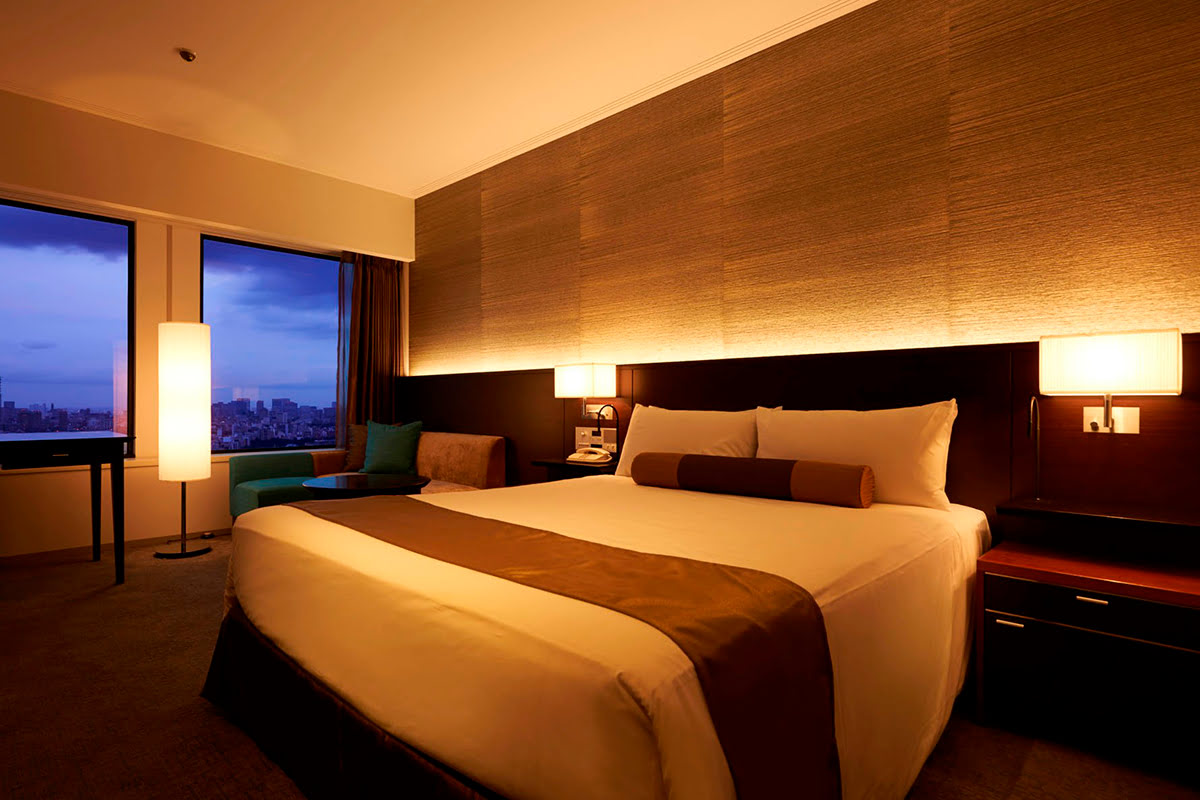Things to Do in Shinjuku | Top Activities & Tokyo Attractions

Famous for its towering skyscrapers, the lively district of Shinjuku is a prime destination for those seeking Tokyo’s best entertainment, restaurants and shopping opportunities. Shinjuku is centred around Japan’s largest railway station, Shinjuku Station, offering those who stay in this district convenient access to all areas of the city.
Main attractions and landmarks in Shinjuku
Shinjuku Gyoen National Garden: This public park was once the home of a feudal lord who lived during Japan’s Edo period (1603 – 1867). In addition to being home to more than 1,000 cherry trees, Shinjuku Gyoen features three different types of garden design: English, French formal and Japanese traditional. The garden is situated within a 5-minute walking distance from Shinjuku Station (Exit 1). The gardens are open to the public from 9:00 a.m. to 4:30 p.m., Tuesday to Sunday.
Shinjuku Park Tower: Shinjuku Park Tower is Shinjuku’s second tallest skyscraper and one of the district’s most famous landmarks. The building is mostly comprised of office space, but there are a number of restaurants and retail shops on the lower levels. Shinjuku Park Tower is accessible via Shinjuku Station (South Exit) and is directly connected to the luxurious Park Hyatt Tokyo. Shinjuku Park Tower is open daily from 7:00 a.m. to 11:30 p.m., but these hours may vary depending on the business.
Samurai Museum: At this recently opened museum, you’ll find a curated collection of swords, armor and artifacts from the Kamakura through the Edo Period, when Samurai culture (“the way of the warrior”) defined Japanese society. You’ll also find plenty of fun things to do at the Samurai Museum, such as having your picture taken in full armor, or watch an actual sword fight. The Samurai Museum is located within a 10-minute walk of Shinjuku Station (East Exit). Hours of operation are from 10:30 a.m. to 9:00 p.m.
Tokyo Dome: This large sport, concert and entertainment complex features an interactive space museum, a Baseball Hall of Fame, a roller skating rink, retail shops, restaurants and an outdoor theme park. There are also extensive spa facilities, including indoor baths, outdoor baths and saunas. Tokyo Dome’s amusement park, Tokyo Dome City Attractions, is free to enter, every day of the week, but you’ll need to purchase tickets for individual rides and for the spa. Tokyo Dome City Attractions is open from 11:00 a.m. to 9:00 p.m. on weekdays and from 10:00 a.m. to 7:00 p.m. on weekends.
Tokyo Toy Museum: Housed inside of an old elementary school building, the Tokyo Toy Museum displays more than 10,000 toys from Japan and around the world. The three-story facility also features an indoor playground, an outdoor playground and a game salon. Workshops are hosted daily and offer visitors the chance to create their own toys. Don’t forget to check out the museum shop, Apty, located on the first floor of the museum. The store stocks a wide variety of wooden and traditional toys crafted by Japanese artisans. Tokyo Toy Museum is located within a 7-minute waking distance of Yotsuya-sanchome Station (Exit 2). The museum is open from 10:00 a.m. to 4:00 p.m. on Tuesday, Wednesday, Friday, Saturday and Sunday.
Bunka Gakuen Costume Museum: Bunka Gakuen Costume Museum is a specialized garment museum that displays clothing from various regions, including Japan, Europe, Africa and Latin America. The museum, which houses the Bunka Gakuen University, was established in 1923 with the goal of creating a specialist apparel museum for educational purposes. In addition to kimonos, western-style apparel and European dresses, the collection at Bunka Gakuen costume Museum also includes items that were acquired from East and South East Asia before the Second World War by an organization affiliated with the Japanese army. The museum hosts four exhibitions a year based on the theme: “Understanding the Culture of the World and Japan through Clothing.” Bunka Gakuen Costume Museum is located within a 1-minute walking distance of Shinjuku Station (Exit 1). Hours of operation are from 10:00 a.m. to 4:30 p.m. Monday to Saturday.
Mannenyu Onsen: This traditional-style Japanese bathhouse is the perfect place to get away from it all. Tucked away along the small side street running south from Okubo Dori, the facility offers several different bathing experiences – including jet stream baths, extra-hot baths and a plunge pool. Soap and shampoo are provided free of charge, and towels can be rented for a small fee. Mannenyu Onsen is situated within a 5-minute walking distance from Shin-okubo Station. The facility is open from 3:00 p.m. to midnight on Monday, Tuesday, Wednesday, Thursday, Friday and Sunday.
Shinjuku Chuo Park: Bordered by some of the district’s most iconic buildings, including the Park Hyatt Tokyo and the Tokyo Metropolitan Government Building, Shinjuku Chuo Park is a veritable oasis in the heart of Shinjuku‘s Skyscraper District. Established in 1958, the park features lush greenery, a children’s playground, a wading pool, picnic facilities and a Kumano-Jinja shrine. Be sure to check out the various sculptures dotted throughout the park, which include the Peace Carillion – a set of 12 temple bells that were installed to commemorate Shinjuku‘s peace city declaration. Shinjuku Chuo Park is located within a 1-minute walking distance of Tochomae Station (Exit A5).
Ninja Trick House: Want to become a ninja for a day? Head to Ninja Trick House, where you’ll learn to wield a sword, throw ninja stars and carry out covert operations like espionage. You’ll also learn about the fascinating history of ninjas at this unique facility, which is located within a short walking distance of the Samurai Museum. Ninja Trick House is open from 10:00 a.m. to 6:30 p.m. on Monday ,Thursday, Friday, Saturday and Sunday. Tours are limited to 12 people at a time, so you’ll want to be sure to make a reservation ahead of time. Find Ninja Trick House within an 8-minute walking distance of Shinjuku Station (East Exit).
Shinjuku Southern Terrace: Bordered by Shinjuku Station, Takashimaya Times Square, the Shinjuku Mylord shopping mall and the Odyaku Hotel Century Sounthern Tower, the commercial zone known as Shinjuku Southern Terrace is one of the largest pedestrian areas in the district. Here, you’ll find a 1,150-foot promenade as well as a number of restaurants, open-air cafes and retail shops. The area is especially busy during the winter months, when visitors from all over the city come to view Shinjuku Southern Terrace‘s annual Christmas light display. The promenade is accessible via the Southern Exit of Shinjuku Station.
Hayashi Fumiko Commemorative Museum: Hayashi Fumiko Commemorative Museum was once the residence of Hayashi Fumiko (1904 – 1951), the author of literary masterpieces Meshi and Ukigomo. The building was constructed in 1941 and converted into a museum in 1992. Today, visitors can tour the residence, which has retained its original design, as well as a garden containing more than 17 varieties of trees – including Japanese maples and cherry trees. Hayashi Fumiko Memorial Hall is open from 10:00 a.m. to 4:00 p.m. Tuesday to Sunday. The facility is located within a 7-minute walking distance from Nakai Station (North Exit).
Tokyo Opera City: Tokyo Opera City is a large, multi-purpose complex that houses a concert hall, six theaters, two art galleries, a restaurant and dozens of retail shops. The complex hosts a variety of performing arts events, including ballet, theatrical plays, operas and music recitals. Start your tour of the complex at the Tokyo Opera City Art Gallery, which features both permanent and special exhibits relating to art, fashion and design, then check out the NTT InterCommunication Center (ICC) gallery to view exhibits that combine science, technology and contemporary art. After your tour, head to the Sky Restaurant on the 53rd floor to enjoy food and drinks while taking in a bird’s-eye view of the city. Tokyo Opera City is located within a 1-minute walking distance of Hatsudai Station (East Exit). The complex is open from 7:00 a.m. to 11:30 p.m. daily, but show times vary for individual events.
Tokyo Metropolitan Government No. 1 Building: The Tokyo Metropolitan Government No. 1 Building is the headquarters of the Tokyo Metropolitan Government. The building comprises two towers – a north tower and a south tower – each of which features a 45th-floor observatory offering stunning views of famous Tokyo landmarks like Tokyo Tower and Tokyo Skytree. The Tokyo Metropolitan Government No. 1 Building also houses a bar, a cafe and a gift shop. The building is conveniently connected to Tochomae Station. The observatories are open from 9:30 a.m. to 11:00 p.m daily, and admission is free.
Shinjuku Historical Museum: The Shinjuku Historical Museum showcases artifacts, exhibits and archaeological finds pertaining to the history of Shinjuku. The museum also houses large-scale model the early post-station town of Naito Shinjuku, complete with rows of Edo-era shops and homes. Other highlights at Shinjuku Historical Museum include an auditorium and a sunken garden. Special exhibitions are hosted regularly and have included themes such as “Shinjuku Landscapes Seen From the Sky.” Shinjuku Historical Museum is situated within a 10-minute walking distance of Yotsuya Station (Exit 2). Hours of operation are irregular, so be sure to check the museum’s website before visiting to avoid disappointment.
Great places to shop in Shinjuku
Don Quijote: Shop everything from souvenirs to home electronics at this large department store, located within a 5-minute walking distance of Shinjuku Station. Purchases made at the store are duty free, and airport delivery is available. Don Quijote is open 24 hours a day, seven days a week.
NEWoMan Shinjuku: You’ll find over 100 high-end retail shops at this massive shopping complex, which is conveniently connected to Shinjuku Station (Miraina Tower Gate). The complex also features a food hall and a rooftop garden. Popular shops at NeWoMan Shinjuku include Chanel, Converse and Enari. The shops are open from 11:00 a.m. to 9:30 p.m. daily.
Shinjuku Takashimaya: Flanked by JR Shinjuku and Yoyogi stations, This multi-level department store stocks high-end brands like Burberry, Fendi, Gucci, Jimmy Choo and Louis Vuitton. The store is located within a 1-minute walking distance of Shinjuku Station. Hours of operation are from 10:00 a.m. to 8:00 p.m. on Monday, Tuesday, Wednesday, Thursday and Sunday, and from 10:00 a.m. to 8:30 p.m. on Friday and Saturday.
Keio Department Store Shinjuku: This large department store stocks a wide range of men’s an women’s fashions, sporting goods, baby products and gourmet foods. Purchases made at the store are exempt from Japan’s 8 percent sales tax. Among the popular brands sold at this store are ECCO, SWAROVSKI, Shu Umera, Columbia and DAKS. Keio Department Store Shinjuku is conveniently connected to Shinjuku Station (West Exit). Shops are generally open from 10:00 a.m. to 8:00 p.m., but hours of operation may vary depending on the store. Restaurants are open from 11:00 a.m. to 10:00 p.m. daily.
Odakyu Department Store Shinjuku: This large department store is conveniently connected to Shinjuku Station‘s West Exit and houses the prestigious Park Hyatt Tokyo hotel. Here, shoppers will find a number of high end retail outlets, restaurants and cafes. Shops at Odakyu Department Store Shinjuku are open daily from 7:00 a.m. to 11:30 p.m.
Shinjuku Alta: Catering to female clientele, this eight-story shopping center stocks everything from cosmetics to footwear. The complex also houses a concert hall where fans can enjoy performances by Japanese and Korean pop artists. Shinjuku Alta is located in front of Shinjuku Station‘s East Exit. Opening hours are from 11:00 a.m. to 8:30 p.m. daily.
Flags: Located just outside of Shinjuku Station‘s Southeast Exit, the Flags shopping center houses a number of fashion and lifestyle stores for men and women. The center is also home to a large Tower Records store that hosts regular live events. Flags is open from 11:00 a.m. to 10:00 p.m. daily.
Shinjuku Electric Town: This famous shopping district is the place to go if you’re looking for anything tech-related. You’ll find mobile phones, PCs, laptops, cameras, and computer components and more along this street, which is located above ground from Shinjuku Station‘s West Exit.
Best places to eat in Shinjuku
New York Grill: Enjoy world-class cuisine and panoramic city views at this restaurant, which sits at the top of the Park Hyatt Tokyo.
Daidaya Shinjuku: this Japanese-style tavern offers creative Asian fusion dishes like soft-shell crab fritters and sautéed foie gras on lotus-root cakes. Daidaya Shinjuku is located in the Shinjuku Nowa Building, within a short walking distance of Shinjuku Station.
Kyourakutei: This restaurant specializes in soba – noodles made from buckwheat flour. Unlike other soba restaurants, however, Kyourakutei features its own millstone. Kyourakutei is located at 3-6 Kagurazaka.
Ogasawara Hakushaku Tei: This Michelin-starred Spanish restaurant offers a monthly rotating menu dishes made using fresh, seasonal ingredients. The restaurant also features an impressive wine list. Ogasawara Hakushaku Tei is located at 10-10 Kawadacho Shinjuku-ku, within a 1-minute walking distance from Wakamatsu-kawasaki Station.
Mentsu-dan: Craving using noodles? Head to Mentsu-dan, where noodles are made right in front of you. Mentsu-dan is located at 7-9-15 Nishi-Shinjuku, within a 10-minute walking distance from Shinjuku Station.
Kyubey: Located in the Keio Plaza Hotel Tokyo at 2-2-1 Nishi-Shinjuku, Kyubey serves up sushi conveyor-belt style. The restaurant offers a basic menu for 4,200 Yen which includes 7 nigiri pieces, a sushi roll, miso soup and tsukemono (Japanese pickles).
Nakajima: Want to experience a Michelin-starred restaurant without breaking the bank? Head to Nakajima, located at 3-32-5 Shinjuku. The restaurant, which boasts one Michelin star, offers a prix-fixe lunch menu for just 800 yen. The set menu consists of sashimi-style iwashi (sardines), rice, miso soup and tsukemono.
Fun-unji: Shinjuku is known for its abundance of ramen eateries, and Fun-unji is arguably one of the best of them. The most popular choice on the menu here is tokusei tsukemono – thick ramen noodles served with a creamy broth made from chicken and fish. Find Fun-unji at 2-14-3 Yoyogi, within a 1-minute walking distance from Shinjuku Station. Table seating is limited, so be prepared for a lengthy wait during peak lunch and dinner times.
Best nightlife spots in Shinjuku
Those looking to experience the best of Shinjuku’s nightlife will want to head to Shinjuku Golden Gai, a block of six alleyways that are lined with over 200 bars. Here, you’ll find everything from large bars with rooftop terraces to intimate lounges that seat only 6 people at a time. Shinjuku Golden Gai area is located within a 5-minute walking distance of Shinjuku Station.
Bitter Orange: With an extensive cocktail, beer and wine list, Bitter Orange is the perfect place to start – or end – a night of bar hopping in Shinjuku Golden Gai. The bar is open until 5:00 a.m. Bitter Orange is located at 1-1-7 Kabukicho (Golden Gai 3rd street).
Death Match in Hell: This counter-only bar caters to fans of death metal. Best of all, there’s no cover charge. Find Death Match in Hell at 1-1-8 Kabukicho (Golden Gai 3rd street).
Ace’s: This foreigner-friendly bar offers all-you-can-drink service for a flat rate of 800 yen. Ace’s is located at 1-1-9 Kabukicho (Golden Gai 3rd street).
Transportation in Shinjuku
Shinjuku Station is the main transportation hub in Shinjuku district. Here, travelers can connect to all of the JR Lines, as well as the Marunuchi and Fukutoshin subway lines, the Odakyu Electric Railway Line, the Toei Oedo Line and theToei Shinjuku Line. The JR Chou Line provides rapid service from Shinjuku to Tokyo Station (approximate travel time is 15 minutes).
Fukutoshin LIne: Connects to Ikebukuro Station in the north and Shibuya Station in the south.
Marunouchi Line: Connects directly to Tokyo Station in the east and Ikebukuro Station in the north
Check In to a hotel in Shinjuku
Step Out to Skyscraper District
You may also like
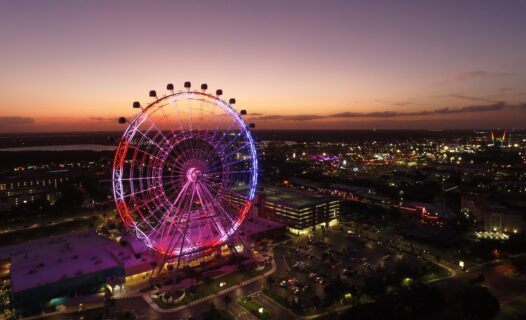
Embark on a culinary adventure in Orlando! From exquisite fine dining and vibrant food trucks to sustainable eats and lively festivals, discover the flavors that make Orlando a foodie's paradise.
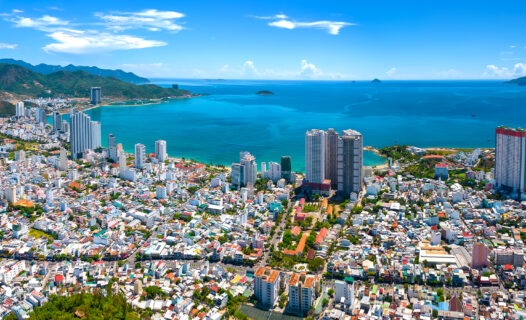
Dive into the ultimate Nha Trang shopping adventure! Explore bustling markets, chic boutiques, eco-friendly finds, and seasonal events in our detailed guide.
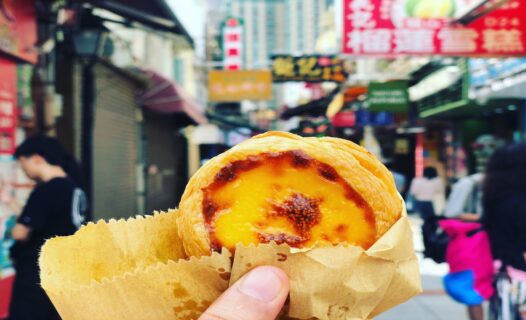
Embark on a culinary journey through Macau with our ultimate guide to its fusion flavors. Discover traditional dishes, insider dining tips, and vibrant food festivals that celebrate the best of Macanese cuisine.
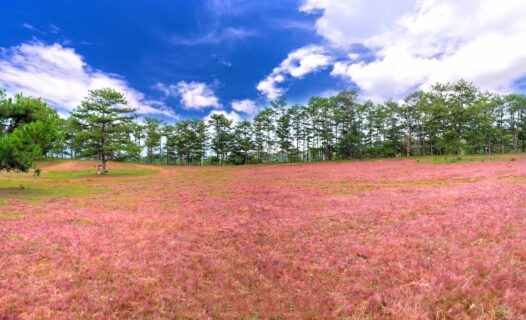
Dive into our captivating 3-Day Dalat Itinerary to uncover Vietnam's highlands gem. From serene lakes to historic sites, embrace adventure & relaxation in Dalat.
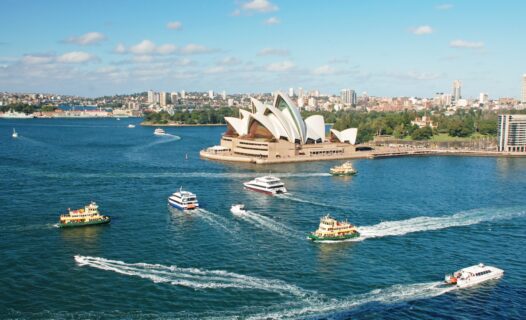
Embark on a captivating 7-day journey through Sydney, Australia. From iconic landmarks like the Opera House to the serene Blue Mountains and vibrant Darling Harbour, discover the best attractions the Harbour City has to offer.

Embark on a captivating 5-day journey through Istanbul, exploring historic wonders and cultural gems. Discover itineraries filled with majestic palaces, vibrant bazaars, and scenic cruises.
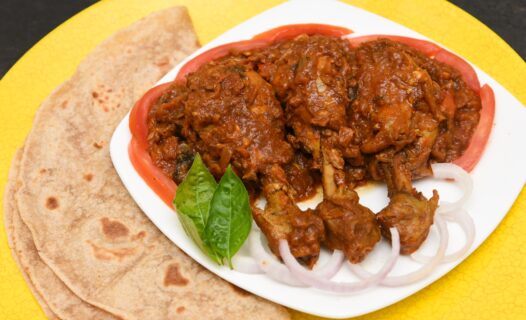
Embark on a delectable journey through Goa's culinary landscape with our comprehensive guide. Discover traditional Goan cuisine's fusion of flavors, from spicy vindaloos to sweet bebinca, and dive into local culture through markets, cooking classes, and sustainable dining.
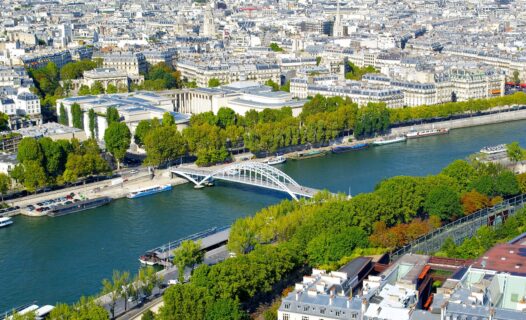
Discover the charm of Paris' arrondissements with our ultimate travel guide. From the historic heart of the city to hidden gems, find the perfect stay for every traveler.
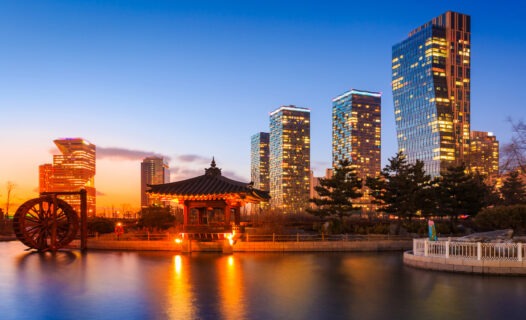
Uncover the best of Incheon in 5 days, from awe-inspiring historic sites to state-of-the-art modern marvels. Indulge in cultural tours, culinary delights, and breathtaking scenery.
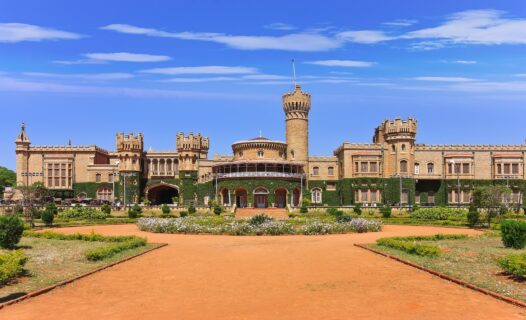
Dive into our 3 Days in Bangalore Itinerary to uncover the best of the Garden City. From royal palaces to tech hubs, enjoy a blend of culture, history, and nature.
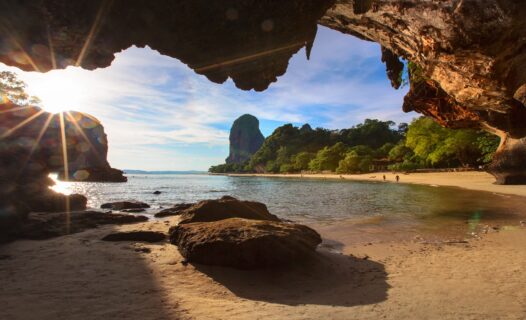
Dive into our exclusive 7-Day Krabi Itinerary on Agoda’s Travel Guide. Discover pristine beaches, lush jungles, and cultural treasures in Thailand's paradise.
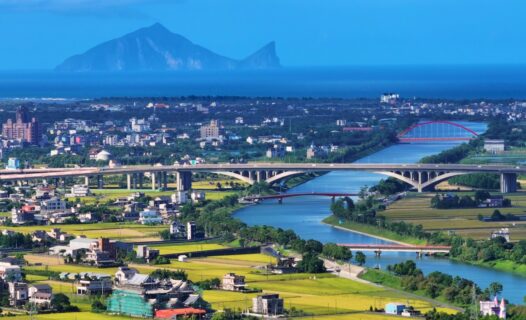
Embark on an extraordinary weekend getaway in Yilan with our curated itinerary. Discover lush landscapes, soak in natural hot springs, and indulge in local culinary delights.
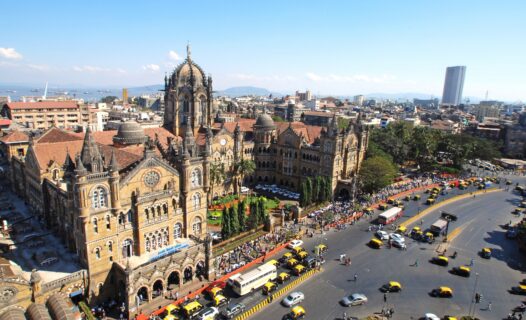
Dive into Mumbai's vibrant culture, history, and flavors with our detailed 3-day itinerary. Discover iconic landmarks, hidden gems, and culinary delights.
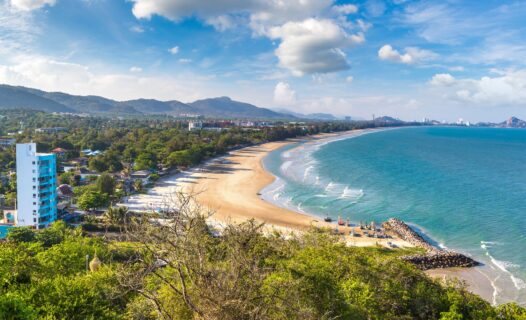
Embark on a 7-day journey through Hua Hin/Cha-am with our expertly crafted itinerary. Discover pristine beaches, royal palaces, and hidden gems.
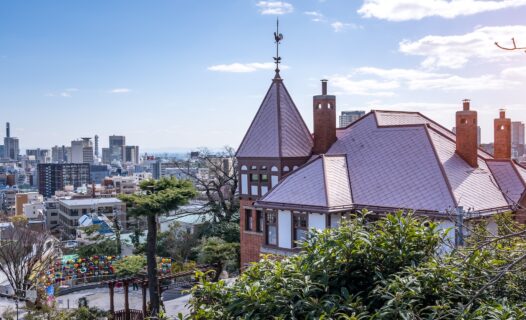
Embark on a captivating 3-day journey through Kobe, Japan. From historical landmarks to scenic beauty, discover the best of Kobe.
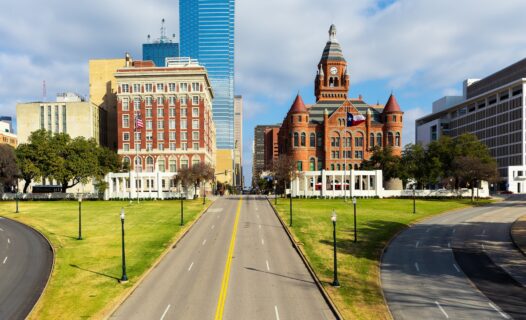
Uncover the best of Dallas with our exclusive 3-day itinerary. From iconic landmarks to hidden gems, discover why Dallas, TX, is a must-visit destination.
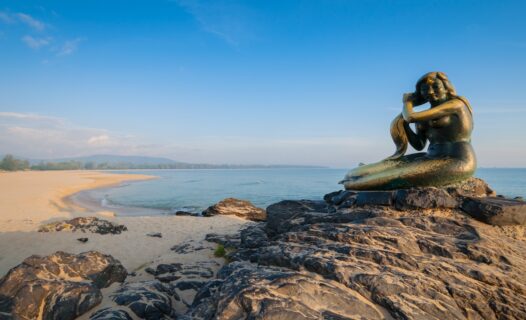
Discover the best of Hat Yai with our 5-day itinerary. From bustling markets to serene temples, experience the hidden gems of Southern Thailand.

Dive into our 5-day Nha Trang itinerary designed for adventure seekers! From island-hopping to scuba diving and cultural wonders, discover the best of Nha Trang with our expert guide.
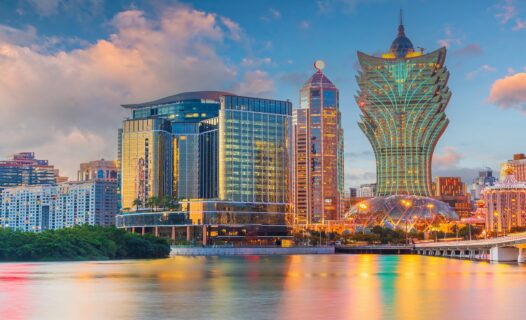
Dive into our engaging 3-Day Macau Itinerary to uncover the vibrant mix of history, culture, and exhilaration in Asia's Vegas.
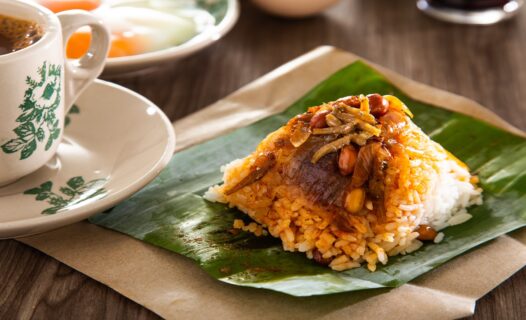
Dive into Ipoh's culinary paradise with our 3-day food lover's guide! Discover the best eats, hidden cafes, and cultural delights in Malaysia's gastronomic haven.

Unveil the magic of Orlando with our exclusive weekend getaway itinerary! From thrilling theme parks to serene gardens and vibrant nightlife, discover top attractions and local hidden gems.

Famous for its towering skyscrapers, the lively district of Shinjuku is a prime destination for those seeking Tokyo’s best entertainment, restaurants and shopping opportunities. Shinjuku is centred around Japan’s largest railway station, Shinjuku Station, offering those who stay in this district convenient access to all areas of the city.
Main attractions and landmarks in Shinjuku
Shinjuku Gyoen National Garden: This public park was once the home of a feudal lord who lived during Japan’s Edo period (1603 – 1867). In addition to being home to more than 1,000 cherry trees, Shinjuku Gyoen features three different types of garden design: English, French formal and Japanese traditional. The garden is situated within a 5-minute walking distance from Shinjuku Station (Exit 1). The gardens are open to the public from 9:00 a.m. to 4:30 p.m., Tuesday to Sunday.
Shinjuku Park Tower: Shinjuku Park Tower is Shinjuku’s second tallest skyscraper and one of the district’s most famous landmarks. The building is mostly comprised of office space, but there are a number of restaurants and retail shops on the lower levels. Shinjuku Park Tower is accessible via Shinjuku Station (South Exit) and is directly connected to the luxurious Park Hyatt Tokyo. Shinjuku Park Tower is open daily from 7:00 a.m. to 11:30 p.m., but these hours may vary depending on the business.
Samurai Museum: At this recently opened museum, you’ll find a curated collection of swords, armor and artifacts from the Kamakura through the Edo Period, when Samurai culture (“the way of the warrior”) defined Japanese society. You’ll also find plenty of fun things to do at the Samurai Museum, such as having your picture taken in full armor, or watch an actual sword fight. The Samurai Museum is located within a 10-minute walk of Shinjuku Station (East Exit). Hours of operation are from 10:30 a.m. to 9:00 p.m.
Tokyo Dome: This large sport, concert and entertainment complex features an interactive space museum, a Baseball Hall of Fame, a roller skating rink, retail shops, restaurants and an outdoor theme park. There are also extensive spa facilities, including indoor baths, outdoor baths and saunas. Tokyo Dome’s amusement park, Tokyo Dome City Attractions, is free to enter, every day of the week, but you’ll need to purchase tickets for individual rides and for the spa. Tokyo Dome City Attractions is open from 11:00 a.m. to 9:00 p.m. on weekdays and from 10:00 a.m. to 7:00 p.m. on weekends.
Tokyo Toy Museum: Housed inside of an old elementary school building, the Tokyo Toy Museum displays more than 10,000 toys from Japan and around the world. The three-story facility also features an indoor playground, an outdoor playground and a game salon. Workshops are hosted daily and offer visitors the chance to create their own toys. Don’t forget to check out the museum shop, Apty, located on the first floor of the museum. The store stocks a wide variety of wooden and traditional toys crafted by Japanese artisans. Tokyo Toy Museum is located within a 7-minute waking distance of Yotsuya-sanchome Station (Exit 2). The museum is open from 10:00 a.m. to 4:00 p.m. on Tuesday, Wednesday, Friday, Saturday and Sunday.
Bunka Gakuen Costume Museum: Bunka Gakuen Costume Museum is a specialized garment museum that displays clothing from various regions, including Japan, Europe, Africa and Latin America. The museum, which houses the Bunka Gakuen University, was established in 1923 with the goal of creating a specialist apparel museum for educational purposes. In addition to kimonos, western-style apparel and European dresses, the collection at Bunka Gakuen costume Museum also includes items that were acquired from East and South East Asia before the Second World War by an organization affiliated with the Japanese army. The museum hosts four exhibitions a year based on the theme: “Understanding the Culture of the World and Japan through Clothing.” Bunka Gakuen Costume Museum is located within a 1-minute walking distance of Shinjuku Station (Exit 1). Hours of operation are from 10:00 a.m. to 4:30 p.m. Monday to Saturday.
Mannenyu Onsen: This traditional-style Japanese bathhouse is the perfect place to get away from it all. Tucked away along the small side street running south from Okubo Dori, the facility offers several different bathing experiences – including jet stream baths, extra-hot baths and a plunge pool. Soap and shampoo are provided free of charge, and towels can be rented for a small fee. Mannenyu Onsen is situated within a 5-minute walking distance from Shin-okubo Station. The facility is open from 3:00 p.m. to midnight on Monday, Tuesday, Wednesday, Thursday, Friday and Sunday.
Shinjuku Chuo Park: Bordered by some of the district’s most iconic buildings, including the Park Hyatt Tokyo and the Tokyo Metropolitan Government Building, Shinjuku Chuo Park is a veritable oasis in the heart of Shinjuku‘s Skyscraper District. Established in 1958, the park features lush greenery, a children’s playground, a wading pool, picnic facilities and a Kumano-Jinja shrine. Be sure to check out the various sculptures dotted throughout the park, which include the Peace Carillion – a set of 12 temple bells that were installed to commemorate Shinjuku‘s peace city declaration. Shinjuku Chuo Park is located within a 1-minute walking distance of Tochomae Station (Exit A5).
Ninja Trick House: Want to become a ninja for a day? Head to Ninja Trick House, where you’ll learn to wield a sword, throw ninja stars and carry out covert operations like espionage. You’ll also learn about the fascinating history of ninjas at this unique facility, which is located within a short walking distance of the Samurai Museum. Ninja Trick House is open from 10:00 a.m. to 6:30 p.m. on Monday ,Thursday, Friday, Saturday and Sunday. Tours are limited to 12 people at a time, so you’ll want to be sure to make a reservation ahead of time. Find Ninja Trick House within an 8-minute walking distance of Shinjuku Station (East Exit).
Shinjuku Southern Terrace: Bordered by Shinjuku Station, Takashimaya Times Square, the Shinjuku Mylord shopping mall and the Odyaku Hotel Century Sounthern Tower, the commercial zone known as Shinjuku Southern Terrace is one of the largest pedestrian areas in the district. Here, you’ll find a 1,150-foot promenade as well as a number of restaurants, open-air cafes and retail shops. The area is especially busy during the winter months, when visitors from all over the city come to view Shinjuku Southern Terrace‘s annual Christmas light display. The promenade is accessible via the Southern Exit of Shinjuku Station.
Hayashi Fumiko Commemorative Museum: Hayashi Fumiko Commemorative Museum was once the residence of Hayashi Fumiko (1904 – 1951), the author of literary masterpieces Meshi and Ukigomo. The building was constructed in 1941 and converted into a museum in 1992. Today, visitors can tour the residence, which has retained its original design, as well as a garden containing more than 17 varieties of trees – including Japanese maples and cherry trees. Hayashi Fumiko Memorial Hall is open from 10:00 a.m. to 4:00 p.m. Tuesday to Sunday. The facility is located within a 7-minute walking distance from Nakai Station (North Exit).
Tokyo Opera City: Tokyo Opera City is a large, multi-purpose complex that houses a concert hall, six theaters, two art galleries, a restaurant and dozens of retail shops. The complex hosts a variety of performing arts events, including ballet, theatrical plays, operas and music recitals. Start your tour of the complex at the Tokyo Opera City Art Gallery, which features both permanent and special exhibits relating to art, fashion and design, then check out the NTT InterCommunication Center (ICC) gallery to view exhibits that combine science, technology and contemporary art. After your tour, head to the Sky Restaurant on the 53rd floor to enjoy food and drinks while taking in a bird’s-eye view of the city. Tokyo Opera City is located within a 1-minute walking distance of Hatsudai Station (East Exit). The complex is open from 7:00 a.m. to 11:30 p.m. daily, but show times vary for individual events.
Tokyo Metropolitan Government No. 1 Building: The Tokyo Metropolitan Government No. 1 Building is the headquarters of the Tokyo Metropolitan Government. The building comprises two towers – a north tower and a south tower – each of which features a 45th-floor observatory offering stunning views of famous Tokyo landmarks like Tokyo Tower and Tokyo Skytree. The Tokyo Metropolitan Government No. 1 Building also houses a bar, a cafe and a gift shop. The building is conveniently connected to Tochomae Station. The observatories are open from 9:30 a.m. to 11:00 p.m daily, and admission is free.
Shinjuku Historical Museum: The Shinjuku Historical Museum showcases artifacts, exhibits and archaeological finds pertaining to the history of Shinjuku. The museum also houses large-scale model the early post-station town of Naito Shinjuku, complete with rows of Edo-era shops and homes. Other highlights at Shinjuku Historical Museum include an auditorium and a sunken garden. Special exhibitions are hosted regularly and have included themes such as “Shinjuku Landscapes Seen From the Sky.” Shinjuku Historical Museum is situated within a 10-minute walking distance of Yotsuya Station (Exit 2). Hours of operation are irregular, so be sure to check the museum’s website before visiting to avoid disappointment.
Great places to shop in Shinjuku
Don Quijote: Shop everything from souvenirs to home electronics at this large department store, located within a 5-minute walking distance of Shinjuku Station. Purchases made at the store are duty free, and airport delivery is available. Don Quijote is open 24 hours a day, seven days a week.
NEWoMan Shinjuku: You’ll find over 100 high-end retail shops at this massive shopping complex, which is conveniently connected to Shinjuku Station (Miraina Tower Gate). The complex also features a food hall and a rooftop garden. Popular shops at NeWoMan Shinjuku include Chanel, Converse and Enari. The shops are open from 11:00 a.m. to 9:30 p.m. daily.
Shinjuku Takashimaya: Flanked by JR Shinjuku and Yoyogi stations, This multi-level department store stocks high-end brands like Burberry, Fendi, Gucci, Jimmy Choo and Louis Vuitton. The store is located within a 1-minute walking distance of Shinjuku Station. Hours of operation are from 10:00 a.m. to 8:00 p.m. on Monday, Tuesday, Wednesday, Thursday and Sunday, and from 10:00 a.m. to 8:30 p.m. on Friday and Saturday.
Keio Department Store Shinjuku: This large department store stocks a wide range of men’s an women’s fashions, sporting goods, baby products and gourmet foods. Purchases made at the store are exempt from Japan’s 8 percent sales tax. Among the popular brands sold at this store are ECCO, SWAROVSKI, Shu Umera, Columbia and DAKS. Keio Department Store Shinjuku is conveniently connected to Shinjuku Station (West Exit). Shops are generally open from 10:00 a.m. to 8:00 p.m., but hours of operation may vary depending on the store. Restaurants are open from 11:00 a.m. to 10:00 p.m. daily.
Odakyu Department Store Shinjuku: This large department store is conveniently connected to Shinjuku Station‘s West Exit and houses the prestigious Park Hyatt Tokyo hotel. Here, shoppers will find a number of high end retail outlets, restaurants and cafes. Shops at Odakyu Department Store Shinjuku are open daily from 7:00 a.m. to 11:30 p.m.
Shinjuku Alta: Catering to female clientele, this eight-story shopping center stocks everything from cosmetics to footwear. The complex also houses a concert hall where fans can enjoy performances by Japanese and Korean pop artists. Shinjuku Alta is located in front of Shinjuku Station‘s East Exit. Opening hours are from 11:00 a.m. to 8:30 p.m. daily.
Flags: Located just outside of Shinjuku Station‘s Southeast Exit, the Flags shopping center houses a number of fashion and lifestyle stores for men and women. The center is also home to a large Tower Records store that hosts regular live events. Flags is open from 11:00 a.m. to 10:00 p.m. daily.
Shinjuku Electric Town: This famous shopping district is the place to go if you’re looking for anything tech-related. You’ll find mobile phones, PCs, laptops, cameras, and computer components and more along this street, which is located above ground from Shinjuku Station‘s West Exit.
Best places to eat in Shinjuku
New York Grill: Enjoy world-class cuisine and panoramic city views at this restaurant, which sits at the top of the Park Hyatt Tokyo.
Daidaya Shinjuku: this Japanese-style tavern offers creative Asian fusion dishes like soft-shell crab fritters and sautéed foie gras on lotus-root cakes. Daidaya Shinjuku is located in the Shinjuku Nowa Building, within a short walking distance of Shinjuku Station.
Kyourakutei: This restaurant specializes in soba – noodles made from buckwheat flour. Unlike other soba restaurants, however, Kyourakutei features its own millstone. Kyourakutei is located at 3-6 Kagurazaka.
Ogasawara Hakushaku Tei: This Michelin-starred Spanish restaurant offers a monthly rotating menu dishes made using fresh, seasonal ingredients. The restaurant also features an impressive wine list. Ogasawara Hakushaku Tei is located at 10-10 Kawadacho Shinjuku-ku, within a 1-minute walking distance from Wakamatsu-kawasaki Station.
Mentsu-dan: Craving using noodles? Head to Mentsu-dan, where noodles are made right in front of you. Mentsu-dan is located at 7-9-15 Nishi-Shinjuku, within a 10-minute walking distance from Shinjuku Station.
Kyubey: Located in the Keio Plaza Hotel Tokyo at 2-2-1 Nishi-Shinjuku, Kyubey serves up sushi conveyor-belt style. The restaurant offers a basic menu for 4,200 Yen which includes 7 nigiri pieces, a sushi roll, miso soup and tsukemono (Japanese pickles).
Nakajima: Want to experience a Michelin-starred restaurant without breaking the bank? Head to Nakajima, located at 3-32-5 Shinjuku. The restaurant, which boasts one Michelin star, offers a prix-fixe lunch menu for just 800 yen. The set menu consists of sashimi-style iwashi (sardines), rice, miso soup and tsukemono.
Fun-unji: Shinjuku is known for its abundance of ramen eateries, and Fun-unji is arguably one of the best of them. The most popular choice on the menu here is tokusei tsukemono – thick ramen noodles served with a creamy broth made from chicken and fish. Find Fun-unji at 2-14-3 Yoyogi, within a 1-minute walking distance from Shinjuku Station. Table seating is limited, so be prepared for a lengthy wait during peak lunch and dinner times.
Best nightlife spots in Shinjuku
Those looking to experience the best of Shinjuku’s nightlife will want to head to Shinjuku Golden Gai, a block of six alleyways that are lined with over 200 bars. Here, you’ll find everything from large bars with rooftop terraces to intimate lounges that seat only 6 people at a time. Shinjuku Golden Gai area is located within a 5-minute walking distance of Shinjuku Station.
Bitter Orange: With an extensive cocktail, beer and wine list, Bitter Orange is the perfect place to start – or end – a night of bar hopping in Shinjuku Golden Gai. The bar is open until 5:00 a.m. Bitter Orange is located at 1-1-7 Kabukicho (Golden Gai 3rd street).
Death Match in Hell: This counter-only bar caters to fans of death metal. Best of all, there’s no cover charge. Find Death Match in Hell at 1-1-8 Kabukicho (Golden Gai 3rd street).
Ace’s: This foreigner-friendly bar offers all-you-can-drink service for a flat rate of 800 yen. Ace’s is located at 1-1-9 Kabukicho (Golden Gai 3rd street).
Transportation in Shinjuku
Shinjuku Station is the main transportation hub in Shinjuku district. Here, travelers can connect to all of the JR Lines, as well as the Marunuchi and Fukutoshin subway lines, the Odakyu Electric Railway Line, the Toei Oedo Line and theToei Shinjuku Line. The JR Chou Line provides rapid service from Shinjuku to Tokyo Station (approximate travel time is 15 minutes).
Fukutoshin LIne: Connects to Ikebukuro Station in the north and Shibuya Station in the south.
Marunouchi Line: Connects directly to Tokyo Station in the east and Ikebukuro Station in the north
Check In to a hotel in Shinjuku
Step Out to Skyscraper District
You may also like
